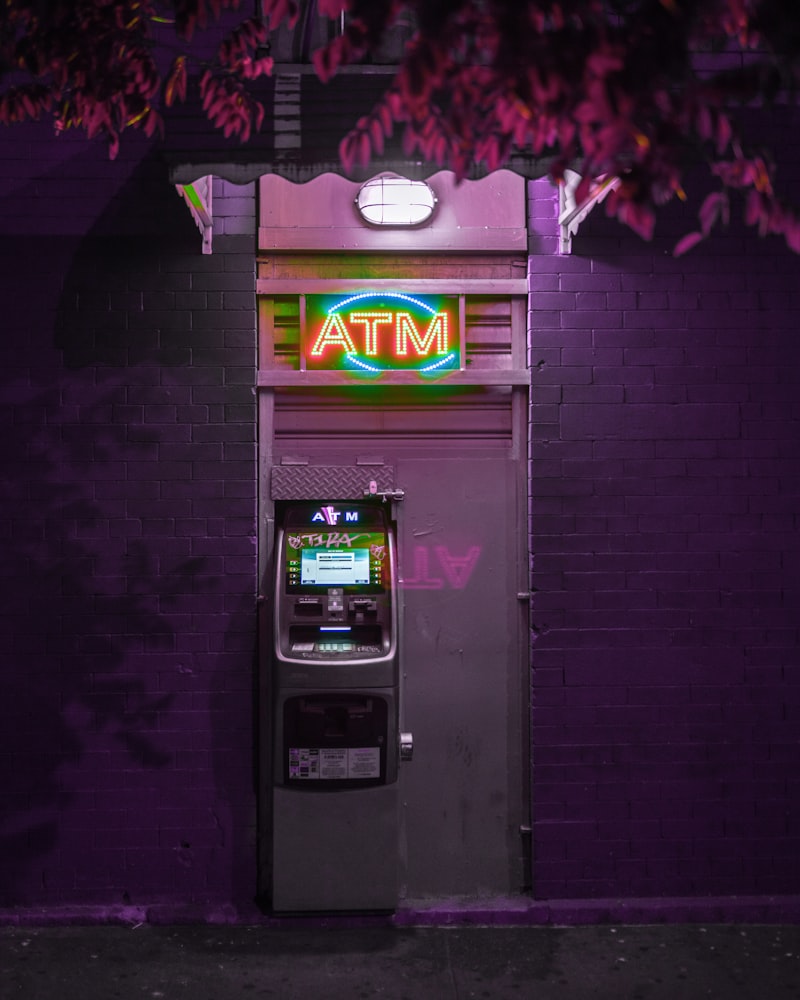Lipsa Das explains why cryptocurrencies designed to not go up are so essential to the crypto ecosystem.
Stablecoins are cryptocurrencies that are designed to have a comparatively stable price. They are usually pegged 1:1 to the value of another asset such as USD, gold, or another crypto. Some coins are also algorithmically manipulated to maintain their value. You can trade your asset to an equivalent amount of that stablecoin and vice versa.
You can be relatively confident that when you transact with stablecoins, the value of the coin will still be roughly the same years later. Unlike the guy who sold 10k bitcoins (worth $4.7B as of Oct 2021) to buy two pizzas. Yikes.
With the stablecoin 24hr trading volume sometimes being higher than even bitcoin, these coins form a critical part of the crypto ecosystem. That's why governments are eyeing stablecoins as one of the first targets for regulation. Since they see the money flowing from bank accounts to cryptos, they are understandably nervous.
Let's first understand why stablecoins have grown so dramatically popular.
Why do stablecoins matter?
Imagine throwing a rock in a small pond. Now, imagine throwing that rock in an ocean. The ripple you caused in the pond would be much larger as the body of water is smaller, right? That's the concept behind the volatility of crypto.
Due to their smaller market caps (bitcoin's $1 trillion market cap compared to the US dollar's $40 trillion market cap), regular buy and sell orders significantly affect the price. And if you go down the altcoin rabbit hole, the price fluctuations will start to feel like a rollercoaster ride.
That's exactly why stablecoins came into existence. Stablecoins are an attempt to bring some order to the chaotic world of crypto by providing a "safe" non-volatile asset. Although the safety aspect is still being debated, there's no doubt that stablecoins helped grow the crypto market exponentially.
Stablecoins are important as they help cut down a lot of the friction that accompanies getting in and out of crypto positions, such as limits on centralized exchanges etc. Traders heavily use stablecoins to get some dry powder to purchase on market dips. Stablecoins also provide liquidity in exchanges for trades and cross-exchange transfers.
Not just traders, stablecoins also have a use case in the real world. Sending a cross-border transaction can also be done in seconds with stablecoins, unlike the pile of paperwork you usually have to fill out at a bank for an international wire. Additionally, merchants have started accepting stablecoins as payments as it makes it easier to predict revenues and chart financials for their business. With stablecoins, they also get exposure to the pegged asset such as the US dollar, gold, or whatever that coin is pegged to without holding that asset.
How do stablecoins work? / Types of Stablecoins
Collateral-backed stablecoins
Collateral-backed stablecoins are the most common and widely used type. The collateral varies but is usually cash, commercial paper, gold, or even crypto. Coins are issued against that particular asset in a fixed ratio, usually 1:1.
While audits help improve transparency, it is hard to prove solvency in centralized collateral-backed stablecoins. However, purely crypto-backed coins with decentralized organizations like DAI or WTBC have a slight edge in transparency because the locked value can be verified on the blockchain.
Examples: USDT, USDC, Paxos, DAI, WBTC
Algorithmic stablecoins
Algorithmic stablecoins are not backed by any particular asset but use arbitrage and balancing algorithms to maintain their value. These are autonomous, decentralized, and without any physical collateral.
Two of the popular methods used by algorithmic stablecoins are stabilizing and rebasing.
Stabilizing means that there are two assets at play here: one volatile asset and one stablecoin. The volatile asset is used to stabilize the stablecoin. We’ll look at how Terra has implemented this a bit further in this article.
Rebasing means that the coins are regulated by smart contracts that increase or decrease the coin in circulation depending on the demand. These countercyclical price adjustments reduce the supply when the demand drops, thus maintaining the peg and vice versa.
Examples: Terra, Ampleforth, Basis
How many stablecoins are there?
According to Coinmarketcap, there are close to 68 "top" stablecoins listed on there. Many more aren't large enough to be listed yet (and new ones popping up every week!). That's a lot of coins!
Will every stablecoin make it? Of course not. So, it's wise to hedge your bets and choose safer ones. Let's look at the top 4 market leaders.
Top 4 Popular Stablecoins
USDT
If you've ever traded in the crypto market, you've heard of USDT. USDT is the most traded (and most controversial) fiat-backed stablecoin, with a larger trading volume than even Bitcoin. Established in 2014, its centralized parent company Tether, is controlled by the exchange Bitfinex.
USDT was initially built on the bitcoin blockchain and used OMNI as its transaction layer. However, Tether's natively created assets on other chains such as Ethereum have also grown pretty popular.
Now for the juicy part: Let's talk about controversies. USDT's controversies stem from the fact that they've flip-flopped a lot on their statements and paid hefty fines to avoid litigation.
Till February 19th, 2019, their website read "Every tether is always backed 1-to-1, by traditional currency held in our reserves." The reserve breakdown that they released (after being pressured to do so) indicates that their previous statement might not have been all that true.
This statement has now been updated to "Every tether is always 100% backed by our reserves, which include traditional currency and cash equivalents and, from time to time, may include other assets and receivables from loans made by Tether to third parties, which may include affiliated entities (collectively, 'reserves')."
If "affiliated entities" seems sketchy to you, you're not alone. Along with that, a close association with Bitfinex, an exchange notorious for making expensive mistakes (like the current $24 million fee fiasco), doesn't help matters.
The reserve breakdown as of March 21, 2021, is as follows:
USDC
USDC, the second most popular on our list of stablecoins, is issued by a company called Circle. While technically identical to USDT, USDC clearly has an edge in getting government officials to like them. Circle, its parent company, is registered with FinCen and 46 other state regulators and regularly audited by Grant Thornton.
USDC released its reserves not long after Tether, and as of May 28, 2021, the breakdown is:
DAI
Now, let's look into crypto-backed stablecoins — the most popular being DAI. DAI is a breath of fresh air from centralized for-profit stablecoins as it is controlled by a decentralized protocol called MakerDAO. DAI maintains a 1:1 ratio with the US dollar via locking specific cryptocurrencies like ETH, LINK, etc.
MakerDAO uses smart contracts on Ethereum through the Oasis platform to provide collateralized debt. So, users can lock in their ethereum or other cryptocurrencies to receive a loan against them in the form of the stablecoin DAI.
If they need to unlock their crypto, they need to pay back the DAI with a fee. However, in case of liquidation i.e, if the value of the locked crypto becomes significantly less than the DAI they borrowed, MakerDAO sells the collateral through an internal auction mechanism.
TerraUSD (UST)
Backed by Luna, UST's ecosystem has shown tremendous growth over the past few months. UST is an algorithmic-backed stablecoin with a particularly interesting take on the entire space.
UST is built on the Terra blockchain with a native utility and governance token called LUNA. Terra allows its users to exchange LUNA for UST, which is equivalent to $1.
Say, you want to mint $150 worth of UST. To do that, you need to supply an equivalent in LUNA tokens. If LUNA is trading at $50, that’s 3 LUNA. The Luna you supply is burned and you get an equivalent in UST.
The catch is: Even when the market price of UST is not exactly $1, this conversion mechanism still pegs the value of the newly minted UST to $1. This incentivizes arbitrageurs to swap between UST and LUNA to make a profit on the price difference. Thus, the peg gets stabilized due to increased demand of either token whenever UST is not at $1.
Are stablecoins safe?
To give you more context, let's first understand how traditional banking systems work. Banks typically follow what is called a "fractional reserve system." That means that at any point in time, the bank doesn't have all the cash deposited to it. Some of it is lent out, or invested into other assets. Therefore, if the bank has a lot of non-performing assets or debt, the risk of the bank going bankrupt is higher.
We've already seen this happen with the Greece financial crisis where they had to be bailed out by the IMF and the European sovereign debt crisis.
In cases of stablecoins, the exact same situation applies. Even though many stablecoins claim otherwise, they do follow the fractional reserve system to some extent by having their reserves in other assets labeled as "cash equivalents."
Tether recently had to pay $41m for claiming that their reserves are fully backed 1:1 by US dollars when in reality a major portion of their assets are in commercial paper.
So, theoretically, if everyone tries to cash out at the same time out of a stablecoin, the peg would crash, and we'd be looking at a crisis. However, the "bail-out" scope in stablecoins is definitely less.
The risk associated with stablecoins depends on the coin you choose. USDC and PAXOS have more reserves in cash than Tether so they may be safer plays. Look into the reserve breakdown of the stablecoin (if it's a fiat-backed one) or the algorithmic peg history to untangle the risks.
Storing and staking stablecoins
With all the money printing and saving bank interest rates at an all-time low, many use stablecoins as an asset to park their money.
After all, DeFi protocols like BlockFi and Celsius provide you an interest rate of close to 8-9% (at the time of writing) on popular stablecoins such as USDT or USDC.
So, what's the catch? How are these protocols able to offer ten times more interest than a traditional bank locker? The answer is simple: it's because of the demand for these stablecoins.
Crypto doesn't have access to traditional financing options like loans from banks etc., due to the nascent stage of these markets. Companies that need these coins for either liquidity or trading (such as exchanges or hedge funds) borrow from DeFi platforms like BlockFi at a higher interest rate. The platforms can then pass on that rate to their users who provide the capital they're lending.
I do have to mention that crypto is, of course, on the riskier side than your bank locker. 8% interest just doesn't come without risk. Traditional bank insurances like FIDC or SIPC are not applicable to the money you hold on these platforms.
So, while it might not be a great idea to hold all your emergency funds in stablecoins, parking your money here while figuring out your next crypto investment might be a good option.
Regulations affecting stablecoins
In a recent interview with the Washington Post, Gary Gensler recently called stablecoins "poker chips at a casino." This statement from a person who taught cryptocurrencies at MIT doesn't paint a pretty picture, does it?
The SEC considers stablecoins as a threat to financial security. People could get hurt if there is a mass liquidation effect. Therefore, it seeks to treat stablecoins issuers as banks. There is no legal framework yet, but it's clear that the US government is looking to regulate stablecoins soon.
If there are significant regulations on stablecoins, it could cause a liquidity shock and hurt the crypto market as a whole.
What's the future for stablecoins?
Stablecoins have seen wide adoption across the board and this is only going to grow. In the battle of the coins, it's not exactly sure who will lead the way. While Tether is currently the frontrunner now, the overall sentiment in the crypto market is slightly negative. The Evergrande scandal and Tether's poor reserves might cause UST and USDC to catch up quickly.
As far as adoption goes, stablecoins have picked up steam. Visa, a proud Cryptopunks NFT owner, is looking into a global transfer of stablecoins and CBDCs. Merchants and service providers are accepting payments in stablecoins to reduce price volatility.
Even banks have realized that if they are not part of the game, they would be closed off entirely to what could be the future of money. Bank of America has partnered up with Paxos to use stablecoins and speed up settlements.
Governments, of course, don't want to miss out on the action and they’re rolling out their own version of stablecoins — CBDCs (central bank digital currencies). Although privacy-concerned citizens of the cryptosphere will likely run miles away from CBDCs, they do represent how we're fast moving towards a world where the future of money is entirely digital and on-chain.
Did you learn something? Writer Lipsa Das is the founder of Spiritwish, and you can find her on Twitter, LinkedIn, and Instagram. And, of course, don't forget to subscribe to the weekly Hedgehog newsletter!






